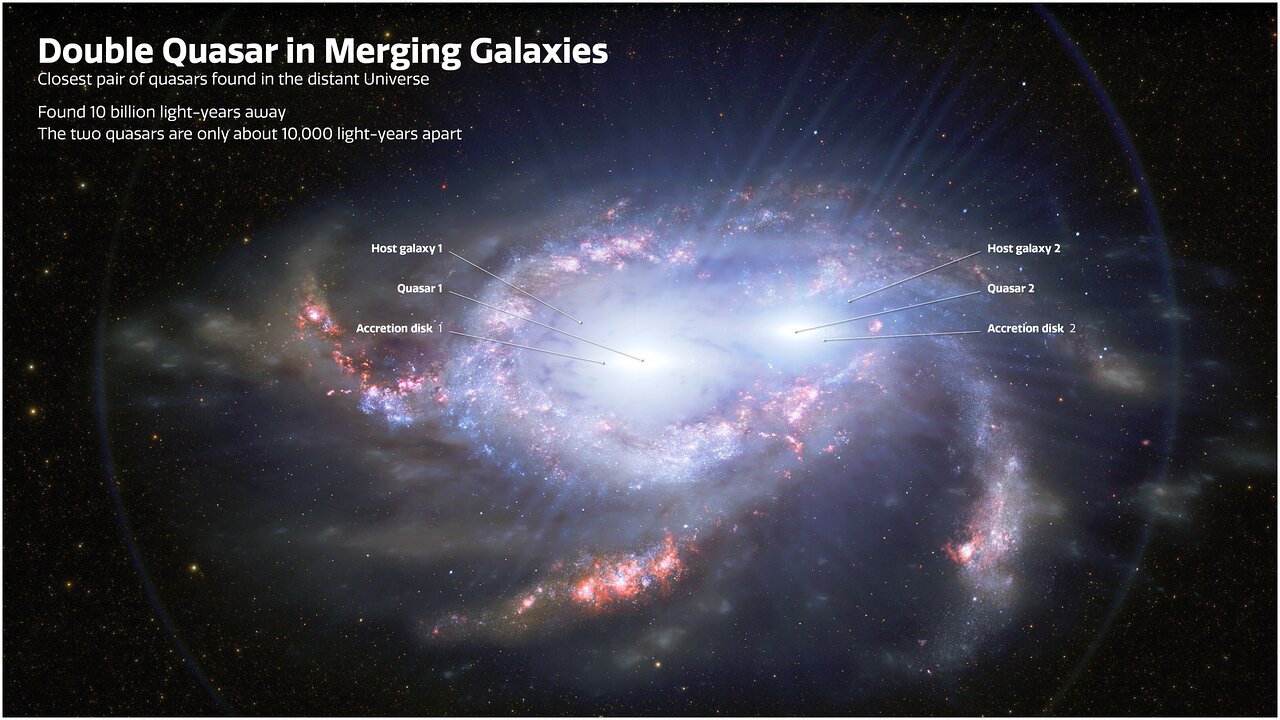Two pairs of quasars in the early universe
Quasars are loners. This is not because they do not get along with their colleagues, but has something to do with their nature. They are nuclei of active galaxies. And every galaxy has only one nucleus. Billions of stars can rotate badly around several cores. Nevertheless, astronomers have now found two quasar pairs at a distance of about ten billion light years as they report in Nature Astronomy.
How is that possible? The researchers have only one explanation for it: It concerns in each case two galaxies merging with one another. Their nuclei will eventually unite to form a single, much larger one. Thereby it will come to the ejection of violent gravitational waves. In fact, this has already happened. In both cases, the two quasars are “only” 10,000 light-years apart. That’s about half as far as from the sun to the nucleus of the Milky Way (which isn’t a quasar, but will be developed into a quasar in “The Death of the Universe“). It is also closer than any other known pair of quasars.
Since we observe the two quasars in a state as it was 10 billion years ago, it has long since come to the great union. But unfortunately it will take a few million years until we can watch it.
